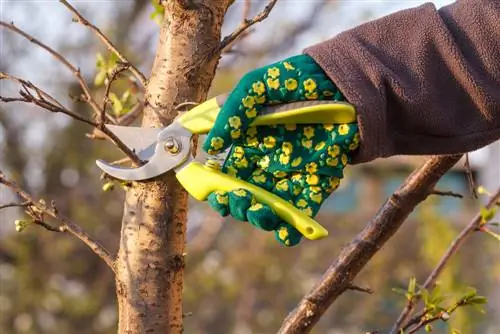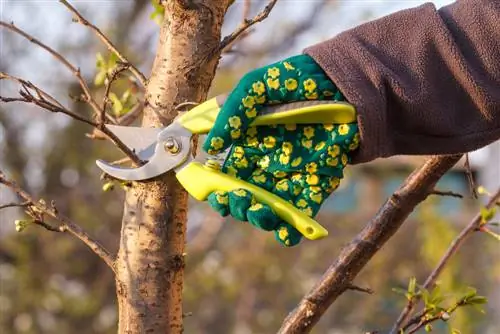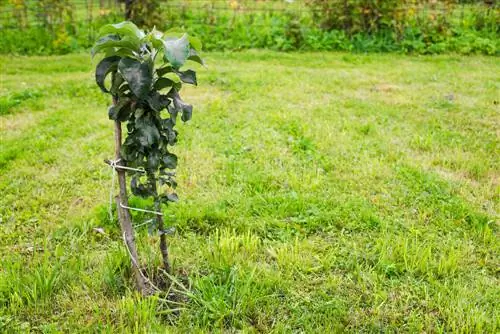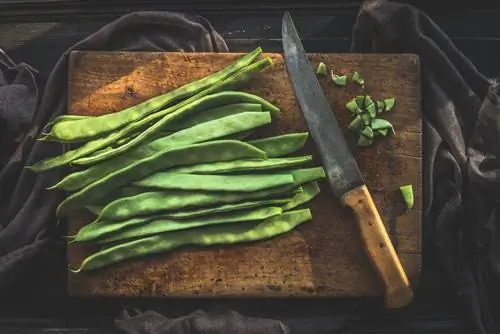- Author admin [email protected].
- Public 2023-12-16 16:46.
- Last modified 2025-01-23 11:21.
In contrast to some other varieties sold as “pillar fruit”, the columnar plum naturally grows relatively slim and tightly upright. Nevertheless, regular pruning is essential when caring for various columnar plum varieties.

How to properly cut a columnar plum?
To properly prune a columnar plum, wait at least a year after planting and cut back the leading shoot and new side branches down to two to three eyes. Remove competing shoots and prune in June or spring.
Why does a columnar plum need to be cut at all?
The term columnar fruit not only suggests a particularly slender growth habit, but is also automatically understood by many gardeners as an indication of a relatively compact size. With the right care and in a well-suited location, columnar plums show vigorous growth, so they are only of limited use as a fruit tree in a pot on the balcony. There are various reasons for cutting a columnar plum:
- maintaining the columnar growth habit
- The amount of yield depends on the fruit wood
- Plant he alth benefits from a well-ventilated growth habit open to the sun
The best time to cut
Similar to “regular” plum trees, columnar plums can also be cut at different times. Some gardeners generally prefer to cut fruit trees in winter, as not only is there relative “rest” of the juice, but the branches without leaves are also much clearer in front of the gardener’s eyes. However, plum trees tolerate pruning better if it is done in June. Nevertheless, certain corrective cuts or the removal of water shoots can also be carried out relatively easily in the spring.
How to prune a columnar plum
Basically, a columnar plum should not be cut for the first time until at least one year after planting. Afterwards, regular cutting of the leading shoot counteracts the balding of the trunk from below. It is particularly important for columnar plums that new side branches are shortened to around two or three eyes. When cut, these develop particularly well into so-called fruit wood by the following year, so that the yield of a tree can be significantly increased. Also make sure that cuts are always made close to a pair of eyes so that the shoots are “redirected” to a certain extent at this point. This cutting technique is therefore also known linguistically as “redirecting” the shoots.
Tip
Columnar plums, like other plum trees, occasionally tend to develop a competing shoot next to the leading shoot. If possible, this should be cut out quickly to prevent the crown from breaking apart.






